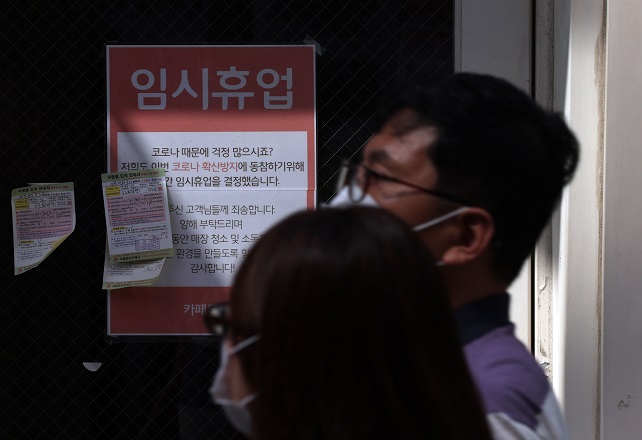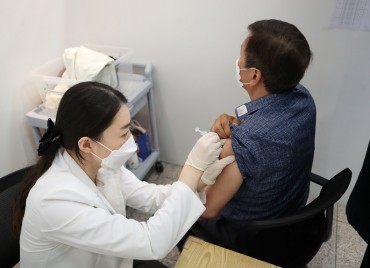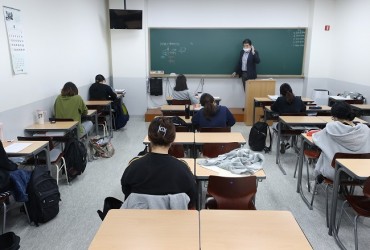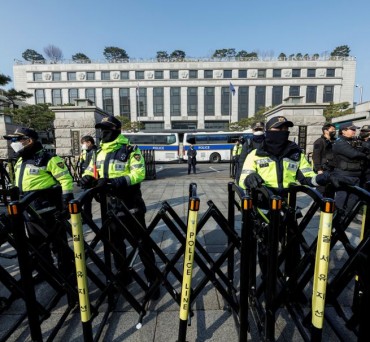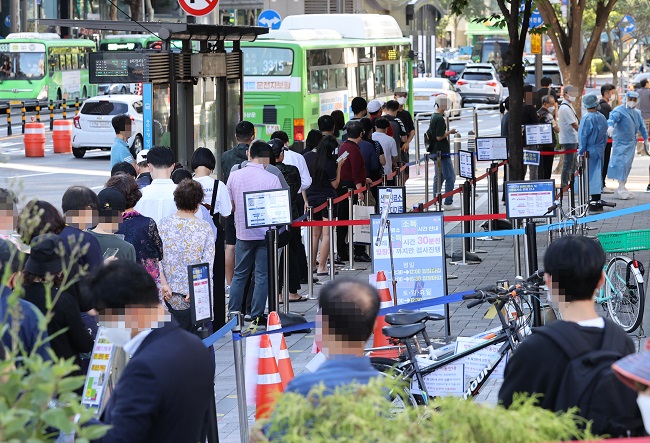
People wait in line to receive virus tests at a COVID-19 testing clinic in Seoul on Sept. 15, 2021. (Yonhap)
SEOUL, Sept. 15 (Korea Bizwire) – South Korea’s daily coronavirus cases surpassed 2,000 Wednesday as infections in the capital area surged to a record high ahead of a major holiday.
The country added 2,080 COVID-19 cases, including 2,057 local infections, raising the total caseload to 277,989, according to the Korea Disease Control and Prevention Agency (KDCA).
The latest caseload was sharply up from 1,497 cases the previous day and topped the 2,000 mark for the first time in six days. It is also the fourth-largest daily figure since the country began to suffer from COVID-19 last year.
Daily cases have stayed above the 1,000 threshold for more than 70 days amid the fast spread of the more transmissible delta variant nationwide.
The country added 13 more deaths from COVID-19, raising the death toll to 2,380. The fatality rate was 0.86 percent.
As of 9 p.m. Wednesday, 1,855 new cases were reported across the country, down 86 from the same time the previous day, according to officials. Seoul and the surrounding Gyeonggi Province reported 706 and 622, respectively.
New infections are counted until midnight and reported the following day.
Infections in the greater Seoul area, home to half of the country’s population, have been weighing down the authorities’ containment efforts recently, with 80 percent of domestic cases being reported in Seoul, Gyeonggi Province and Incheon.
The capital area logged a record 1,656 local infections, with Seoul reporting its highest daily figure yet at 804.
“Relaxed vigilance and increased population movement are pushing up the spread of the virus in the capital region,” Sohn Young-rae, a senior health official, said.
Health authorities are especially worried about a virus flare-up after the Chuseok holiday, the Korean autumn harvest celebration, when tens of millions of people are expected to travel across the country. South Koreans will have a five-day holiday through Wednesday.
The authorities will enforce special quarantine measures, including running COVID-19 testing clinics at highway rest stops, for two weeks through Sept. 26.
They earlier extended the current social distancing measures — Level 4 in the greater Seoul area, which is the highest in the four-tier system, and Level 3 in other regions — for another four weeks through Oct. 3.
While the country is limiting the size of private gatherings and restaurant business hours, it has eased some restrictions to give leeway to vaccinated people.
Health authorities are urging more people to get vaccine shots before the holiday, citing data that 92.4 percent of the cases found in adults in the past two weeks were from people who have not been fully vaccinated.
A total of 34.58 million people, or 67.3 percent of the country’s population, have received their first shots of COVID-19 vaccines, and 20.71 million people, or 40.3 percent, have been fully vaccinated, the KDCA said.
South Korea’s COVID-19 vaccination program has been using vaccines from Moderna, Pfizer, AstraZeneca and Janssen.
The authorities said a first-shot vaccination rate of 70 percent is expected to be achieved this week. The country also targets to see 70 percent of the population fully vaccinated by the end of October.
The authorities plan to beef up inoculation of foreign residents here. Foreigners accounted for 15 percent of total cases in the past week, and infections among them have been rising for the last eight weeks.
They plan to give Janssen’s single-dose COVID-19 vaccine to foreigners here.
So far, 227,232 cases of post-vaccination side effects have been reported, with 10,715 added in the past two days, though 95.8 percent of them were found to be mild symptoms, such as muscle pain and fever.
There have been 615 deaths after vaccination, though the authorities have yet to find a causal relationship between receiving a vaccine and death in most cases.
The country has so far identified 26,848 cases of major variant infections, up 3,460 from a week earlier. Of them, the delta strain accounted for a whopping 23,395.
There have been 4,731 breakthrough cases among 11.57 million people who were fully vaccinated as of last Monday, up 876 from a week earlier, accounting for roughly 0.041 percent. Those in their 30s had the highest rate of breakthrough infections.
Of the newly confirmed domestic cases, 804 were from Seoul, 688 from the surrounding Gyeonggi Province and 164 from the western port city of Incheon.
Busan, the country’s second-largest city, reported 40 cases, while South Chungcheong Province indentified 80 cases.
Among virus clusters, a hospital in Daegu added five cases, raising its total to 267.
The number of cases linked to a cram school in Daejeon rose by five to 59, while six more cases were found to be tied to a medical facility in Incheon, raising its total to 31.
Imported cases, which include South Korean nationals, came to 23, down 11 from the previous day. The total number of imported cases is now at 14,027.
Of the new imported cases, six were from the Philippines, followed by the United States with five.
The number of patients with serious symptoms across the country reached 350, up 10 from the previous day.
The total number of people released from quarantine after making full recoveries was 249,833, up 2,186 from a day earlier.
As of Tuesday, 51 percent of hospital beds allocated for virus patients in critical condition, or 485 beds, are available for use, the authorities said.
For a gradual return to normalcy, the authorities added they are looking into the possibility of expanding options of treating the virus at home for asymptomatic patients and those with mild symptoms in the future.
(Yonhap)


